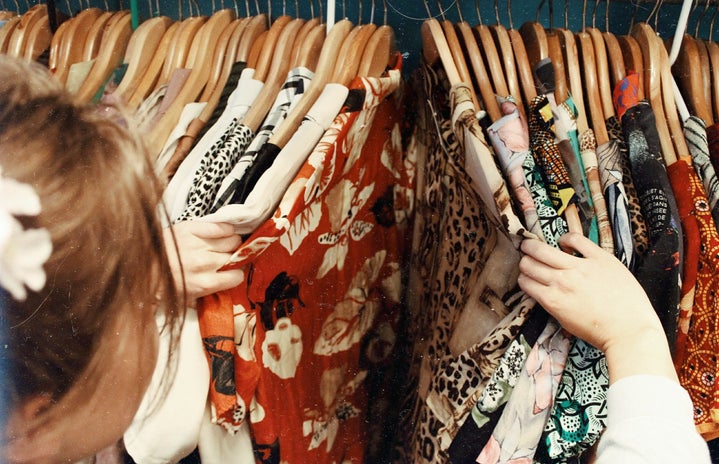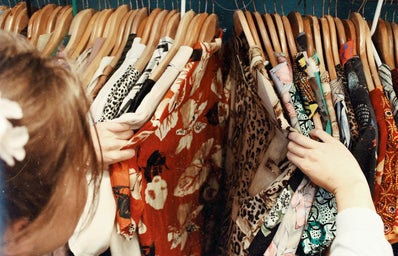I bet there isn’t one single soul with a smartphone and a TikTok account that doesn’t know what Zara is. Who doesn’t remember, during the first lockdown, the ‘Zara Haul’ videos on the platforms, the same blue ruched crop top seen on hundreds of different bodies, the pastel-coloured jeans which screamed spring and summer.
I was never a fan of Zara before TikTok made it so cool. Sure, I had a few pieces from the brand in my closet, but I remember that I always complained about the quality. Two of the trousers I owned broke at the same exact time in the same exact period, a lovely shirt started losing threads here and there, and overall I always struggled to find something in line with my sense of style – at least until TikTok came around and showed me a bunch of beautiful and normal girls wearing the same clothes I never saw myself in.
We all know Zara’s website can be…odd, sometimes: models seem so ethereal that anything they put on would look good on them. Yet, there is something comforting in seeing girls just like me trying on clothes, showing how pretty they look, seeing how confident a piece of clothing makes them feel.
And I guess when something becomes popular on TikTok, it automatically becomes popular in real life. The hashtag #Zara has a total of 7 billion views on the platform. Not bad at all considering that, for instance, the hashtag #UrbanOutfitters – another brand young people love these days – doesn’t even reach 462 million views.
TikTok videos make it seem like Zara always has the right look for you, no matter the occasion. You can go to a club, have a romantic date, go to class and even to the gym wearing Zara. The aura of the effortless, elegant, “always on point” look seems to follow you if you’re wearing Zara. It gives the impression that Zara aspires to be more than a fast-fashion retailer, as if there was a hint of high fashion desire in their pieces, and I think that is what people are looking for now.
In a world in which people are aware of the consequences of fast fashion and are trying to be more sustainable, clothing brands know that the only way to satisfy customers is to engage in this discourse and try to look more environmentally conscious. But that is just a well-told lie: fast fashion companies will never care about the environment just like they never cared about the working conditions of their employees.
As much as high street fashion retailers promote their apparent sustainability, the underlying truth tells a very different story. There are many factors that contribute to this claim. To mention one, in the report ‘The Environmental Price of Fast Fashion’, published on the Nature Reviews Earth & Environment, it has been found that brands are now producing almost twice the amount of clothing compared with the ’90s. The majority of this doesn’t get sold. Instead, it produces textile waste, which is often incinerated, landfilled, or taken to developing countries.
We all know that brands such as Primark prefer delivering cheap clothing rather than being more ethical. If we bought a top from Primark for two pounds, we’d know that there is a reason why it costs so little: the production, the delivery and the whole process allowing that top to arrive in our wardrobe leaves behind a bunch of victims, from the underpaid worker in the sweatshop to the environment, as most clothing cannot be fully decomposed. All of this is just for a piece of clothing that won’t last more than a few seasons in our wardrobe.
Economists use the term ‘externalities’ to describe those side effects which aren’t included in the price of an item. In the case of Primark, items are so cheap because their price doesn’t include the negative ethical and environmental impacts their manufacturing produces: low wages, poor working conditions are only two of the many consequences a two pounds t-shirt generates.
Zara, however, has figured out a far sneakier way to deceive their customers as their prices are much higher than some of its main competitors, such as H&M. As their designs look more high fashion than fast fashion it is easy for customers to naively assume that the production process behind their clothing is more ethical than other fast fashion brands. The logic behind this is that we pay more for seemingly high-quality clothing to feel like we are buying sustainably, although we are not.
Greenwashing – the marketing practice where companies make misleading claims about their products to appear environmentally friendly and ethical – is very popular among fast fashion brands. Zara is one of the brands owned by Inditex, a Spanish multinational clothing company from Spain. Along with Zara, Inditex owns other brands such as Zara Home, Bershka, Pull&Bear, Stradivarius, Massimo Dutti, Oysho, Uterque and Lefties. Though, Zara remains its largest brand.
In the recent years, Inditex has said to be committed to sustainability. For example, a quick scroll through the Internet and we find that Zara has pledged to use only sustainable fabrics by 2025. Yet, the material of their clothing today mostly consists of virgin synthetics and conventional viscose and cotton, materials that all pollute massively.
Cotton is, in fact, the worst fabric for the environment: nonetheless being a natural and biodegradable fibre, the amount of water to cultivate and process it is enormous. It takes up to 3,000 gallons of water to make a t-shirt. In the case of synthetics, although they require little water, they aren’t biodegradable, and they all depend on petrochemical industries for their materials. This means fashion brands are somehow contributing to fossil fuel extraction. Synthetics are also one of the causes of pollution in our waterways, as they release microfabrics when they are being washed.
A 2021 Synthetics Anonymous report explains how creating clothing from plastic, particularly from plastic bottles, seems to pollute the planet more as the plastic used to create clothes won’t be able to be re-cycled again. Other than that, typically it takes much more energy to recycle clothes than producing new ones.
The report also shows that the Zara Join Life Collection, which is supposedly more environmentally conscious, has 45% of synthetic material in its clothing. This is a very high number considering that the rest of the collections’ percentage is 64%.
Not to mention Zara’s massive speed production. To keep up with the Inditex label as the largest clothing retailer in the world, Zara produces an average of 450 million items a year, releasing 500 new designs a week. It is undiscussable that this sort of rhythm in delivering clothes – especially clothes made from environmentally unethical fabrics – cannot be considered in any way sustainable.
It is also important to mention another aspect of fast fashion, namely the labour conditions within the industry. Zara has been accused multiple times of having employees working in terrible conditions with very low wages. The whole idea of being an elegant, fashionable and sustainable brand is only a façade.
Zara shows no concrete effort to create clothes that minimise the impact on the environment and respect the people who create them. This will never be possible if the production doesn’t slow down and if Zara continues to ignore the massive consequences their overproduction has on the planet every year.
Now is the time to set a limit to the number of clothes we buy and to the number of clothes that are produced by big fast fashion companies such as Zara. A sustainable brand is not defined by its pledges, but by its concrete efforts to consciously produce good quality clothing items that won’t impact our planet, and Zara has a long way ahead before it can call itself sustainable.
Unfortunately, we don’t have much more time to change.
Words by: Caterina Bertini
Edited by: Ellen Robinson


